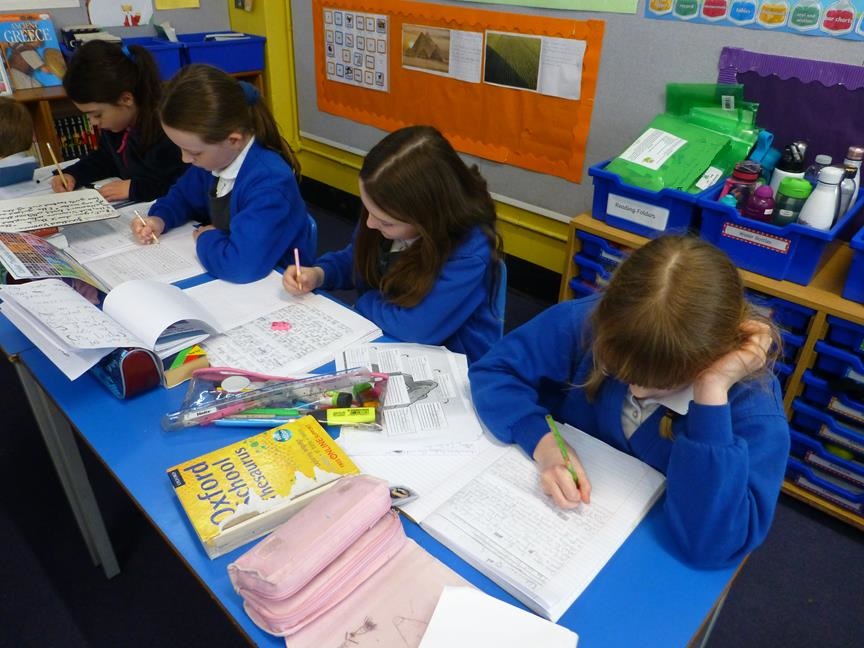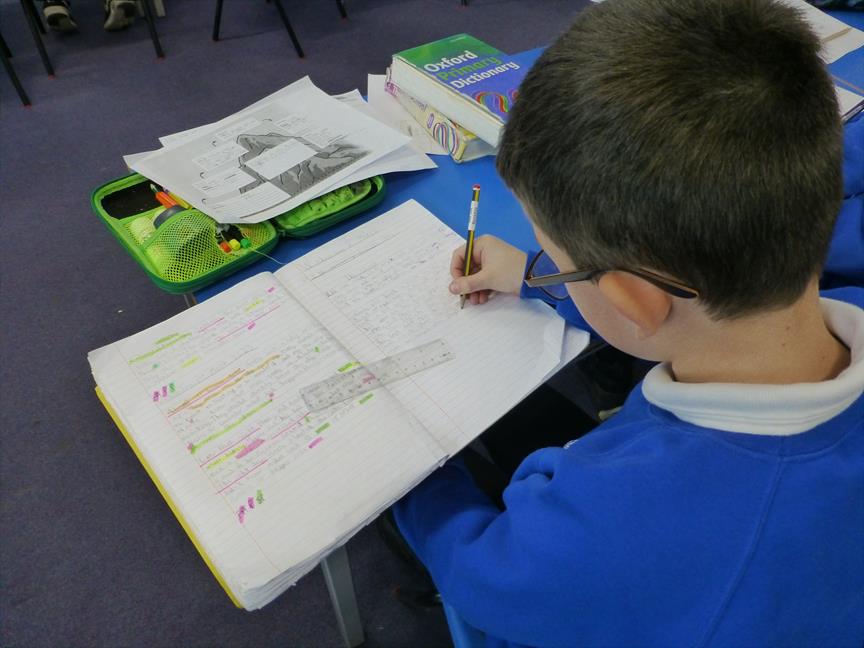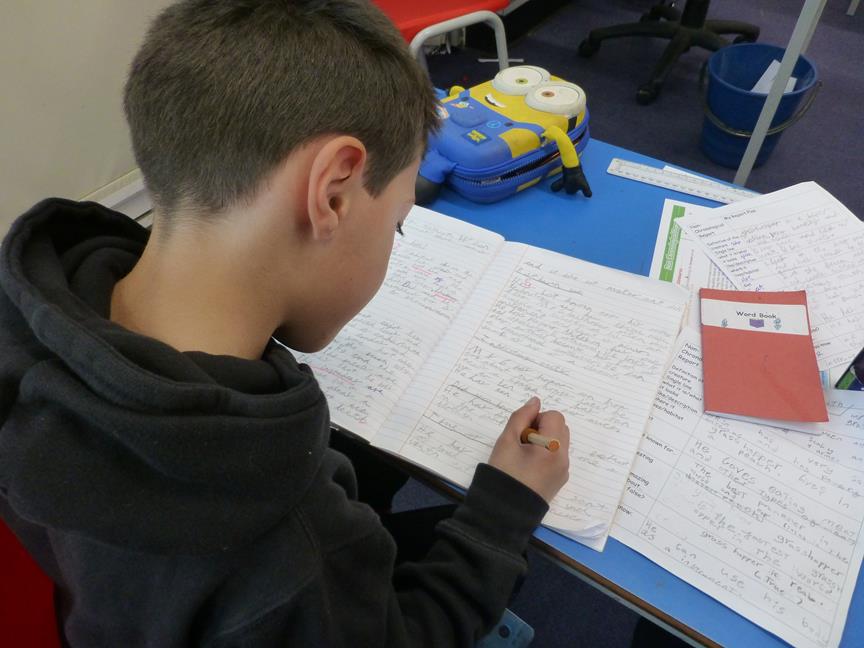Our Approach to Writing
Our Intent
By the time our pupils reach the end of Key Stage 2, it is our intention that they have developed:
- The ability to organise and plan their written work with increasing independence.
- An enjoyment of writing and understanding of the craft of drafting and redrafting their own work. Idea – plan – draft – edit – (publish).
- The ability to write effectively for range of purposes and audiences, covering a wide range of genres, using knowledge which has been built upon and skills honed over their years at our school.
- The stamina and skills to write at length, with accurate spelling and punctuation and the ability to self-correct their own errors.
- The ability to produce fluent, legible handwriting with increasing speed and stamina
- The ability to use grammar correctly and understand and use not only the correct grammatical terminology, but also to understand the effect of varying grammatical devices.

Implementation
We strive to ensure all of our children develop a genuine love of language and the written word, often through a text-based approach which is under-pinned by the Talk for Writing principles of modelled writing. Links are made across the curriculum to ensure that children’s English learning is relevant and meaningful.
We ensure that children develop an understanding of how widely writing is used in everyday life and, therefore, how important and useful the skills are that they are learning.
We teach the National Curriculum, supported by a clear skills and knowledge progression shown in the document below. This ensures that skills and knowledge are built on year by year and sequenced appropriately to maximise learning for all children.
We aim to develop children’s ability to produce well-structured, detailed writing in which the meaning is made clear and which engages the interest of the audience / reader. Particular attention is paid throughout the school to the formal structures of English: grammatical detail, punctuation and spelling.
Handwriting is taught discretely from Reception to Year 6, following a systematic, sequenced scheme that supports children in progressing at their own pace. Our handwriting approach develops fluency, legibility and eventually speed, so that by the end of KS2, children can write their ideas confidently across the curriculum. For further details of our how we teach handwriting, please read the handwriting policy on our policies page.
During writing lessons, teachers clearly model writing skills and document the learning journey through consistent working walls and posters; guided writing sessions are used as required to target specific needs of both groups and individuals. Children have opportunities to write at length in extended, independent writing sessions at the end of a unit of work, applying their taught skills to an unsupported piece of writing.
Throughout Reception, Key Stage 1 and Key Stage 2, we teach writing through a Talk for Writing approach, analysing carefully chosen texts and/or specifically written models. Children are then given the opportunity to imitate and innovate, using their own ideas to write a story.
As well as reading a wide variety of genres, children are given frequent opportunities to develop their writing skills in different genres, considering audience and purpose.
Pupils are taught discrete punctuation and grammar skills, appropriate to their year group, within their English lesson.
They have opportunities to identify, practice and consolidate grammatical understanding. Children then apply the grammar and punctuation skills that they have learnt in their extended pieces of writing.
By the time our pupils are in Year 6, they are encouraged to set their own goals for writing through pupil conferencing.

Spelling
Spelling is taught regularly in focused sessions within each class and weekly lists can be found here.
We encourage children to learn their spellings using the 'Look, Cover, Write, Check' method. This encourages your child to 'see' and 'hear' the word, and to see for themselves if it is right.
- Look at a spelling word.
- Cover the spelling word.
- Visualise the covered word in the mind.
- Write the word from memory.
- Check what has been written with the uncovered word.
Learning to recognise the high frequency words on sight is crucial in developing fluency and accuracy in reading and then writing. High frequency words are the words that appear most often in printed materials. Some of the high frequency words are referred to as ‘tricky words’, as the children are unable to use their phonic knowledge to decode every part of the word. These are taught within Phonics sessions as part of our Little Wandle for Letters and Sounds scheme (see progression here).
Once children are confident in reading and spelling high frequency words, they are taught spelling rules in every year from Year 1 and are encouraged to apply these rules in their writing. Spellings are sent home weekly in each year group as part of the children’s homework; the pupils are then tested on these words in their weekly spelling tests.
Impact
By the time children leave Emmer Green Primary, they will:
- Have a love for writing and write for enjoyment.
- Be able to confidently plan and write for a range of different purposes and audiences.
- Be able to utilise features of texts they have read to construct their own pieces of work.
- Be able to write with stamina and confidence, with fluent, legible handwriting.
- Be able to produce written work in all areas of the curriculum to a high standard, with accurate spelling.



